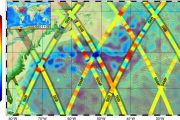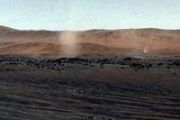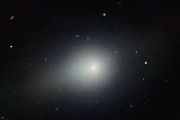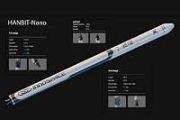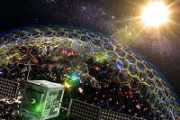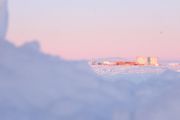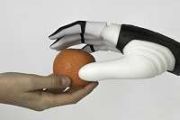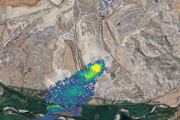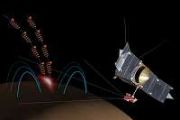
Copernical Team
The next frontier in space is closer than you think: Welcome to the world of very low Earth orbit satellites
Verifying that you are not a bot
NASA JPL tests future lunar craft with shake-up
Verifying that you are not a bot
Image: Hatch thermal cover protects space station vestibule
Verifying that you are not a bot
SpaceX squeezes in 100th Space Coast launch, but weather delays ULA, 2nd SpaceX mission
Verifying that you are not a bot
First image from Sentinel-6B extends sea-level legacy

Copernicus Sentinel-6B, launched last month, has reached its orbit and delivered its first set of data, which show variations in sea level in the North Atlantic Ocean. This data underlines how the mission will continue to strengthen the long-term reference record of sea levels, a key parameter of climate change.
20 years in Antarctica

For two decades, ESA has sent a medical doctor to brave the cold and more for 13 months at Concordia station in Antarctica, one of the most remote places on Earth. This unique environment – isolated, confined and extreme – mirrors many of the psychological and physiological challenges astronauts face in space. By studying life at Concordia, scientists can better understand these effects, develop countermeasures and prepare for future human missions beyond Earth.
Autonomous DARPA project to expand satellite surveillance network by BAE Systems
 The U.S. Defense Advanced Research Projects Agency (DARPA) has awarded BAE Systems' FAST Labs research, development, and production organization a $16 million Phase 2 contract under the Oversight program, which is developing an autonomous space-based system to maintain continuous custody of many terrestrial assets using new satellite constellations.
The Phase 2 award follows completion of
The U.S. Defense Advanced Research Projects Agency (DARPA) has awarded BAE Systems' FAST Labs research, development, and production organization a $16 million Phase 2 contract under the Oversight program, which is developing an autonomous space-based system to maintain continuous custody of many terrestrial assets using new satellite constellations.
The Phase 2 award follows completion of Rocket Lab completes first dedicated JAXA mission with Electron launch
 Rocket Lab Corporation has carried out its first dedicated launch for the Japan Aerospace Exploration Agency (JAXA), advancing the role of the Electron small launch vehicle in Japan's satellite technology demonstration program. The mission marks a new step in collaboration between Rocket Lab and JAXA in support of Japan's growing space activities.
The flight, named RAISE And Shine, lifted
Rocket Lab Corporation has carried out its first dedicated launch for the Japan Aerospace Exploration Agency (JAXA), advancing the role of the Electron small launch vehicle in Japan's satellite technology demonstration program. The mission marks a new step in collaboration between Rocket Lab and JAXA in support of Japan's growing space activities.
The flight, named RAISE And Shine, lifted Southern Launch to host INNOSPACE missions from South Australian spaceports
 Southern Launch has signed a contract with South Korean launch service provider INNOSPACE to conduct space missions from the Whalers Way Orbital Launch Complex and the Koonibba Test Range in South Australia.
The agreement allows INNOSPACE to undertake a range of missions from Southern Launch sites, including orbital satellite launches and suborbital technology demonstration flights.
Southern Launch has signed a contract with South Korean launch service provider INNOSPACE to conduct space missions from the Whalers Way Orbital Launch Complex and the Koonibba Test Range in South Australia.
The agreement allows INNOSPACE to undertake a range of missions from Southern Launch sites, including orbital satellite launches and suborbital technology demonstration flights. Gemini North tracks changing glow of interstellar Comet 3IATLAS
 Gemini North has obtained new color images of Comet 3I/ATLAS after the interstellar object emerged from behind the Sun on its outbound trajectory from the Solar System. Using the Gemini Multi-Object Spectrograph (GMOS) on the Gemini North telescope at Maunakea in Hawaii, scientists observed the comet on 26 November 2025 to study how it has evolved since perihelion.
The observations were co
Gemini North has obtained new color images of Comet 3I/ATLAS after the interstellar object emerged from behind the Sun on its outbound trajectory from the Solar System. Using the Gemini Multi-Object Spectrograph (GMOS) on the Gemini North telescope at Maunakea in Hawaii, scientists observed the comet on 26 November 2025 to study how it has evolved since perihelion.
The observations were co 


